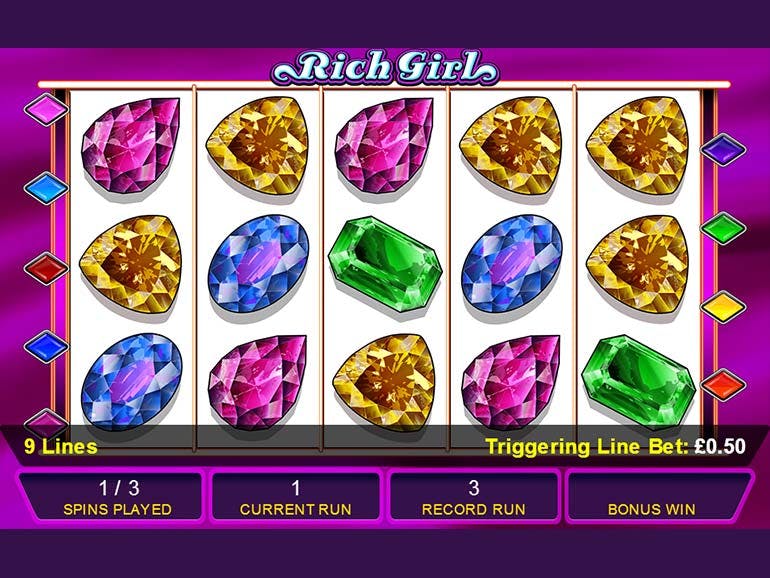1. Introduction: Understanding Fairness in Games and Its Cultural Foundations
Fairness in games is a fundamental principle that ensures all participants have an equal opportunity to succeed, enjoy, and feel respected during gameplay. While it might seem straightforward—rules should be just and unbiased—perceptions of fairness are deeply rooted in cultural and historical contexts. What one society considers fair may differ significantly from another, reflecting diverse values, norms, and experiences.
Understanding these influences is essential, not only for analyzing traditional games but also for designing modern interactive experiences that resonate globally. This article explores how history and culture shape fairness perceptions, illustrating these concepts through examples from different eras and societies, with a particular focus on contemporary manifestations like the popular motif «Lady In Red» in gaming aesthetics.
Contents
- The Role of History in Shaping Fairness in Games
- Cultural Perspectives on Fairness in Gaming
- Case Study: The 1920s Cultural Shift and Its Reflection in Games and Society
- The Intersection of Popular Culture and Fairness in Games
- Modern Illustrations of Cultural Influence: The Case of «Lady In Red»
- Non-Obvious Factors Affecting Fairness in Games
- Implications for Game Design and Cultural Sensitivity
- Conclusion: Integrating Insights to Foster Fairness
2. The Role of History in Shaping Fairness in Games
a. Historical evolution of game rules and fairness concepts
Historically, the concept of fairness in games has evolved alongside societal structures. In ancient civilizations like Egypt and Mesopotamia, game rules often mirrored social hierarchies, with certain players having advantages based on status. Over time, especially during the classical period, the development of standardized rules—such as those in chess—began to embody notions of fairness through equality and strategic balance.
b. How past societal norms influence modern fairness standards
Societal norms—whether emphasizing individual achievement or collective harmony—have historically shaped perceptions of what constitutes fair play. For example, in feudal societies, fairness might have been associated with loyalty and hierarchy, influencing early notions of fairness in social games. In contrast, modern democratic societies tend to prioritize equality and transparency, reflected in rules that aim to minimize bias and favoritism.
c. Examples from different eras illustrating changing perceptions of fairness
| Era | Fairness Perception | Example |
|---|---|---|
| Ancient Civilizations | Hierarchical, privilege-based | Royal chess sets with exclusive access |
| Medieval Period | Emerging fairness through codified rules | Official rules of medieval tennis |
| Modern Era | Equality, transparency, standardization | Development of organized sports leagues |
3. Cultural Perspectives on Fairness in Gaming
a. Cross-cultural differences in fairness expectations and practices
Different cultures have unique interpretations of fairness rooted in their social values. In Western societies, fairness often emphasizes individual rights and competitive success. Conversely, many Eastern cultures prioritize harmony and collective well-being, which influences how fairness manifests in group-based games and social interactions.
b. The impact of cultural values (e.g., collectivism vs. individualism) on game design and rules
Collectivist cultures tend to favor game rules that promote cooperation and shared benefits, such as team-based competitions with equitable resource distribution. In contrast, individualist cultures may emphasize personal achievement, leading to game mechanics that reward individual skill and merit. These differences shape not only game rules but also the aesthetic and thematic elements incorporated into game design.
c. Case studies highlighting cultural variations in fair play
For example, in Japan, the traditional game of Go embodies strategic fairness and respect for opponents, reflecting cultural values of humility and mastery. In contrast, Western poker emphasizes risk-taking and bluffing as fair strategies within the game’s rules, aligning with a culture that values individual cunning and competitive spirit. Such differences demonstrate how cultural backgrounds influence players’ perceptions of what constitutes fair behavior.
4. Case Study: The 1920s Cultural Shift and Its Reflection in Games and Society
a. The influence of the Roaring Twenties on social norms and game fairness
The 1920s, often called the Roaring Twenties, was a period of social upheaval and liberation. This era saw a shift toward more relaxed social norms, embracing spontaneity and individual expression. In gaming, this was reflected in the rise of casino culture, where games like poker and roulette became symbols of chance and glamour, challenging traditional notions of fairness rooted in skill and order.
b. The symbolism of red (e.g., red roses) and its cultural significance during this era
Red, symbolizing passion, luck, and vitality, gained prominence during this period. The «Lady In Red» motif, for instance, became an icon of allure and sophistication, embodying the era’s celebration of bold aesthetics. Such symbolism influenced game themes, where red often represented luck and vibrancy, subtly shifting perceptions of fairness toward chance and emotional appeal rather than strict equity.
c. Technological advancements (e.g., vintage cameras) and their societal impact on perceptions of fairness
Technological innovations like vintage cameras introduced new ways of capturing and sharing moments, fostering a culture that valued transparency and authenticity. These advancements contributed to evolving ideas of fairness, emphasizing openness and verifiability—principles still relevant in contemporary digital gaming environments.
5. The Intersection of Popular Culture and Fairness in Games
a. How cultural movements (e.g., jazz) affected notions of fairness and spontaneity in games
The jazz movement of the early 20th century celebrated improvisation and spontaneity, influencing attitudes toward fairness in informal games. Spontaneous play, emphasizing creativity over strict rules, gained popularity, challenging traditional notions that fairness meant rigid adherence to standardized rules.
b. The influence of fashion and aesthetics (e.g., ‘Lady In Red’) on game themes and fairness perceptions
Fashion and aesthetics often serve as symbols of cultural identity and values. The «Lady In Red» motif, for example, has influenced modern game themes, adding layers of elegance and emotional resonance. Such aesthetic elements can shape players’ perceptions of fairness—associating certain styles with sophistication or luck—highlighting how cultural aesthetics permeate game narratives and visual design.
c. Modern examples where cultural themes influence game design and fairness considerations
Contemporary games increasingly incorporate cultural motifs to appeal to diverse audiences. For instance, themed slot machines may feature symbols like red roses or elegant women, connecting visual aesthetics with perceived fairness and luck. This integration demonstrates how cultural themes are not merely decorative but influence players’ engagement and expectations regarding fairness.
6. Modern Illustrations of Cultural Influence: The Case of «Lady In Red»
a. Analyzing how the motif «Lady In Red» reflects cultural attitudes towards fairness and aesthetics in gaming
The «Lady In Red» motif embodies a blend of elegance, passion, and luck—values that resonate across cultures. In gaming, such imagery often symbolizes sophistication and chance, subtly influencing perceptions of fairness by associating aesthetic appeal with positive outcomes. This motif reflects the human tendency to link visual symbolism with emotional and cultural narratives, shaping how players interpret fairness within game environments.
b. The role of visual symbolism in shaping players’ perceptions of fairness and elegance
Visual elements like color, attire, and posture convey messages beyond the game mechanics. A «Lady In Red» figure suggests allure and exclusivity, which can lead players to perceive certain game features as more desirable or ‘fair’ based on aesthetic appeal. Research indicates that visual symbolism significantly influences trust and engagement, demonstrating the power of aesthetics in framing fairness perceptions.
c. Connecting historical-cultural symbolism to contemporary game narratives and aesthetics
Modern game designers often draw on historical symbols like the «Lady In Red» to evoke emotional responses and cultural resonance. For example, casino-themed games employ such imagery to evoke glamour and luck, blending tradition with innovation. This approach underscores how cultural symbolism remains relevant, shaping narratives and perceptions of fairness in today’s gaming landscape. You can explore similar themes in contemporary platforms by visiting is lady in red worth playing?.
7. Non-Obvious Factors Affecting Fairness in Games
a. Unconscious biases rooted in cultural and historical contexts
Players and designers may harbor unconscious biases shaped by their cultural backgrounds, influencing what they perceive as fair. For instance, stereotypes about gender or social class can subtly affect game mechanics or interpretations, often unnoticed but impactful over time.
b. How societal progress and cultural shifts redefine fairness over time
As societies evolve, so do their notions of fairness. Movements toward equality and inclusion have led to more equitable game designs, such as accessible interfaces for players with disabilities or culturally sensitive themes, reflecting ongoing cultural shifts.
c. The influence of technology and globalization on cross-cultural perceptions of fairness
Global connectivity exposes players to diverse cultural norms, leading to a broader understanding of fairness. Technologies like online multiplayer platforms necessitate adaptable fairness standards, balancing different cultural expectations to create inclusive gaming environments.
8. Implications for Game Design and Cultural Sensitivity
a. Designing fair games that respect diverse cultural backgrounds
Effective game design requires awareness of cultural differences. Incorporating culturally respectful themes and avoiding stereotypes ensures inclusivity, fostering a sense of fairness among a global audience.
b. Incorporating historical and cultural elements thoughtfully to enhance fairness
Integrating cultural symbols, like historical motifs or aesthetic themes, can enrich gameplay while reinforcing fairness principles. Thoughtful inclusion fosters authenticity and deepens engagement, provided it respects the origins and significance of such elements.
c. Strategies for balancing tradition and innovation in fairness standards
Balancing respect for traditional fairness standards with innovative features—such as adaptive algorithms or culturally tailored rules—can create dynamic, fair gaming experiences that resonate across cultures.
9. Conclusion: Integrating Historical and Cultural Insights to Foster Fairness in Games
“Understanding the roots of fairness in history and culture allows game designers and players alike to appreciate the rich complexity behind what appears to be simple rules — ultimately fostering more inclusive and respectful gaming environments.”
In summary, fairness in games is a dynamic concept shaped by centuries of social, cultural, and technological changes. Recognizing these influences not only enriches our understanding but also guides the development of more inclusive, engaging, and culturally sensitive gaming experiences. As the gaming industry continues to evolve, fostering ongoing dialogue between history, culture, and fairness will be essential to creating environments where everyone feels valued and respected.



